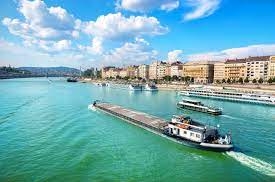From the ports of the Danube, Ukraine exports grain by ships whose age exceeds 40 years

To ship grain from the Danube ports of Ukraine, exporters use all available ships with a deadweight of 1.5-8 thousand tons, so now mostly ships 35-40 years old are operating, although their service life is usually 25-30 years.
During the operation of the grain corridor, significantly larger grain carriers entered the ports of the Danube, in particular, in June - the ship "Blue Gate" with a deadweight of 24 thousand tons.
Using the old fleet allows you to solve the insurance problem that arose after the completion of the grain agreement. Since May 2023, the Cabinet of Ministers has been actively working on plan "B", which should replace the grain corridor by creating an insurance fund of $500 million to cover the risks of damage to ships due to attacks by the Russian Federation. A week ago, it was announced that the work on the creation of an international insurance pool had been completed, but the mechanism has not yet started.
Yu. Klimenko, deputy head of the Verkhovna Rada committee on transport and infrastructure, said that she is "skeptical about state insurance funds, as they are interested in minimizing budget costs."
But traders need to fulfill contractual obligations, and farmers need to export grain, so they cannot wait and use the risk minimization mechanism without full insurance, delivering grain in small batches and old vessels. It was the armada of small old grain carriers that ensured the increase in the volume of transshipment of Ukrainian grain through the port of Constanta.
It is possible to get from the Danube ports to Constanta through the Sulyn canal, without leaving the territorial waters of Romania, or with a greater risk of attack from the Russian side - through the mouth of Bystre, which opens into Ukrainian waters. This risk is compensated by the use of the old fleet.

Against the backdrop of sanctions, the Russian Federation uses old tankers (the so-called ghost fleet) to export oil, and since July it has begun actively chartering old small grain carriers, the demand for which has increased by 40%, and prices have almost doubled. Since the beginning of August, freight rates in the direction of Israel have increased by 8%, and to the Eastern Mediterranean - by 4-6%.
However, the analysis of cargo flows shows that Russian ports are mainly served by large grain carriers, while the owners of a small number of small vessels are companies from Arab countries and Turkey, which may be influenced by political agreements. That is, if the president of Turkey actively advocates for the restoration of the grain agreement, then the shipowners' contracts with Russian exporters may be suspended.
Freight rates from Reni and Ismail remain at a high level of $40-50/t to Constanta and $70-80/t to Spanish or Mediterranean ports, but could rise further if significant volumes of corn need to be exported, if not shipment through Black Sea ports will resume. All this will lead to a further decrease in purchase prices for grain in Ukraine.


